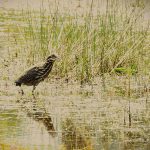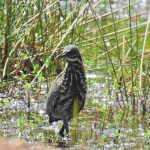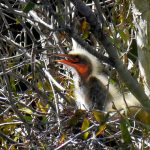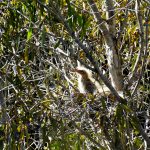BLACK BITTERN
The secretive Black Bittern are like the whispers of the waterways, often heard but seldom seen, their presence known by a fleeting shadow or a soft call echoing through the reeds.
The Black Bittern, with its slate-black feathers that seem to absorb the light around it, is a master of camouflage. Its yellow neck and streaks of buff on its breast allow it to blend seamlessly with the tangled vegetation of its habitat. The bird’s deep, booming call is often the only clue to its presence, as it prefers the solace of dense reed beds and mangroves.
These bitterns can be found across the northern and eastern parts of Australia, from the Kimberley region in Western Australia, across the Northern Territory, and down the eastern coastline to New South Wales and Victoria. They are also known to inhabit parts of Queensland, where the waterways provide ample food and shelter.
The wetlands and mangroves that the Black Bittern calls home are vital ecosystems, teeming with life. In these lush environments, the bittern forages stealthily, moving with deliberate grace. It feeds primarily on fish, which it catches with lightning-fast thrusts of its sharp beak, but its diet can also include crustaceans, amphibians, and insects.
As the seasons change, so does the life of the Black Bittern. During the breeding season, which typically coincides with the wetter months, these birds become slightly more conspicuous. They construct their nests hidden among the reeds or in the forks of trees overhanging water, crafting them from sticks and vegetation. The female lays a clutch of pale blue-green eggs, which both parents will then guard and nurture until the chicks are ready to brave the world on their own.
Despite its wide distribution, the Black Bittern is not commonly encountered, and its populations are under pressure from habitat destruction and alteration. Wetlands are being drained for development or agriculture, leaving these birds with fewer places to hunt and nest. Pollution and changes in water quality also pose significant threats.
The story of the Black Bittern is a poignant reminder of the delicate balance within Australia’s unique ecosystems. By protecting the wetlands and mangroves, we safeguard the future of not only the Black Bittern but countless other species that rely on these habitats for survival. Conservation efforts continue to ensure that the mysterious call of the Black Bittern will resonate through Australia’s wild places for generations to come.




